Houseplants bring life, beauty, and a calming presence to our indoor spaces, but a common problem many plant enthusiasts face is leggy growth. A leggy plant is characterized by long, weak stems with sparse foliage, often caused by insufficient light, improper pruning, or nutrient imbalances. While leggy growth can make plants look unattractive and unhealthy, it is entirely reversible with the right care and techniques.
This guide explores why houseplants become leggy, how to fix them, and strategies to encourage bushier, healthier growth.
1. Understanding Leggy Houseplants
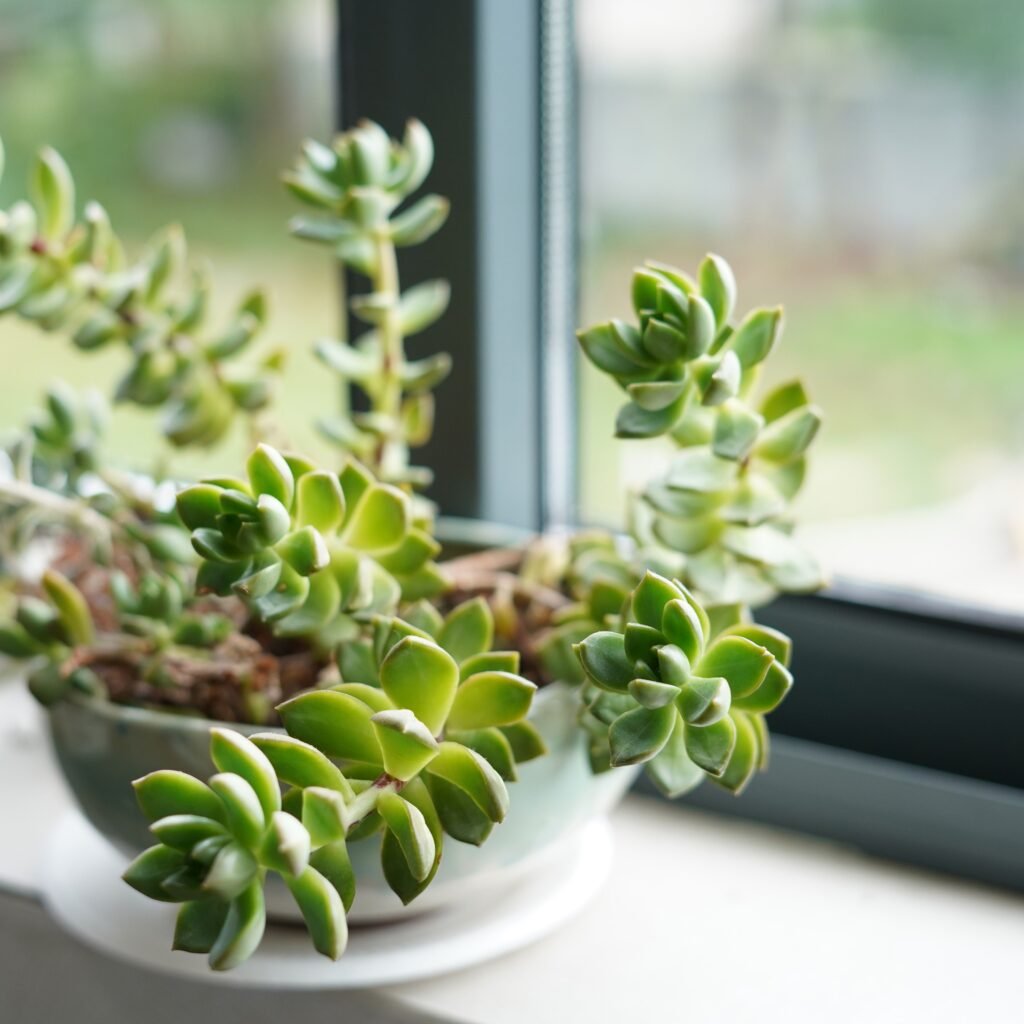
Leggy growth is usually a plant’s response to stress or unfavorable conditions. Recognizing the underlying cause is the first step toward correction.
Common Causes of Leggy Growth:
- Insufficient Light: Plants stretch toward available light, leading to elongated stems and widely spaced leaves.
- Overcrowding: Plants in cramped spaces compete for light, causing stretching.
- Improper Pruning: Failing to trim encourages vertical, sparse growth.
- Nutrient Imbalances: Lack of nitrogen or other essential nutrients can weaken stems.
- Improper Watering: Inconsistent watering can stress plants, resulting in poor foliage density.
Tip: Identify the cause before applying corrective measures; treating symptoms without addressing the root problem may only provide temporary improvement.
2. Adjusting Light Conditions
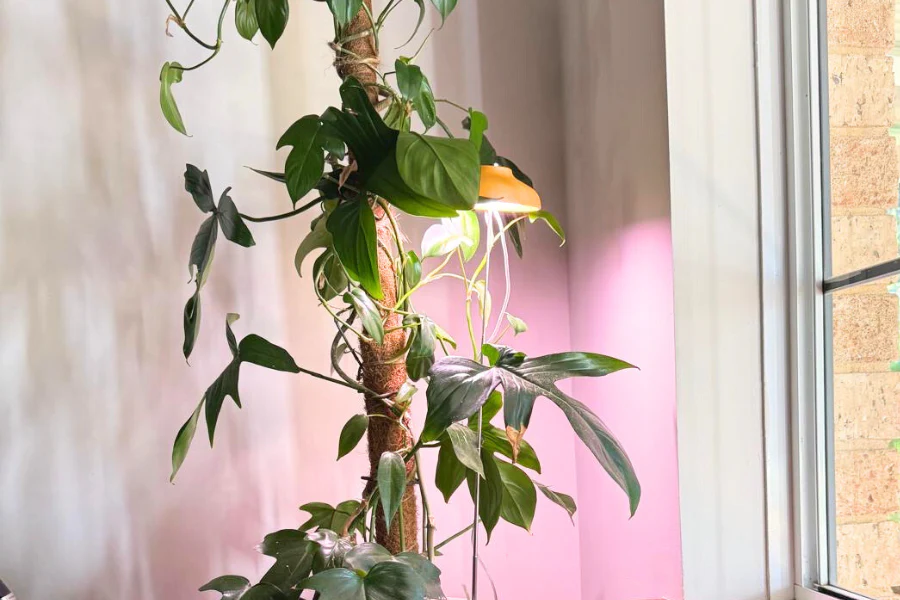
Lighting is the most critical factor for bushy, compact growth in houseplants.
Tips for Optimal Light:
- Bright, Indirect Light: Most houseplants thrive in bright, filtered sunlight. Direct sun can scorch leaves, while low light encourages stretching.
- Rotate Plants: Turn plants regularly to ensure even exposure on all sides, preventing uneven leggy growth.
- Supplement with Grow Lights: For low-light interiors, use LED or fluorescent grow lights to provide 12–16 hours of light per day.
- Window Positioning: East or south-facing windows generally provide the best natural light for indoor plants.
Tip: Place leggy plants closer to the light source gradually to avoid shock and leaf burn.
3. Pruning and Pinching Back
Pruning is a highly effective way to revitalize leggy houseplants and encourage bushier growth.
Pinching Technique:
- Pinch or trim the tips of stems just above a leaf node (the point where leaves grow).
- This stimulates lateral growth, producing more branches and leaves.
Hard Pruning:
- For extremely leggy plants, cut back stems to one-third of their length.
- Remove damaged, yellow, or weak growth to redirect energy to healthier parts.
After Pruning Care:
- Water thoroughly and provide adequate light.
- Consider applying a mild liquid fertilizer to encourage new growth.
Tip: Regular pruning prevents legginess and maintains a compact, bushy appearance over time.
4. Propagating Cuttings from Leggy Plants
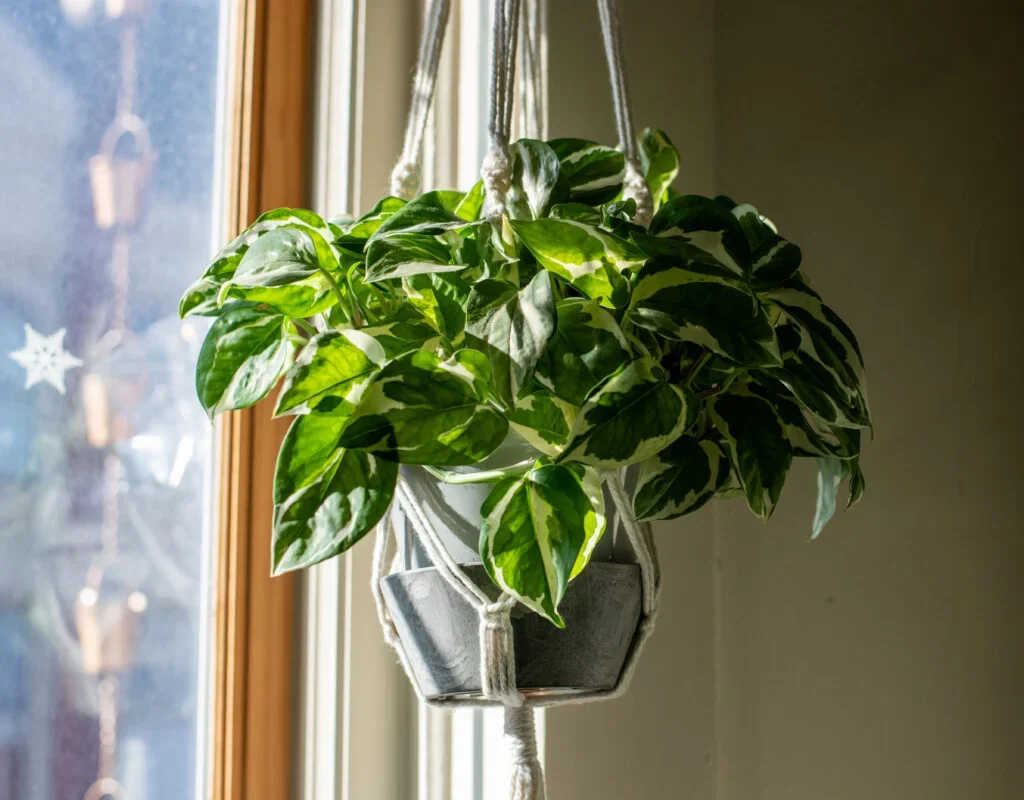
Propagation is a win-win solution for leggy houseplants. Not only do you revive the parent plant, but you also create new, healthy plants.
Steps for Propagation:
- Select healthy, leggy stems and cut just below a leaf node.
- Remove lower leaves to expose nodes for root development.
- Place cuttings in water or moist soil until roots form.
- Once rooted, transplant into small pots with well-draining soil.
Tip: Plants like pothos, philodendron, and coleus root easily from cuttings and respond quickly to propagation.
5. Adjusting Water and Nutrients
Proper watering and feeding are essential to restore a leggy plant’s vigor.
Watering Guidelines:
- Keep soil evenly moist but not soggy; overwatering can lead to weak stems.
- Ensure pots have good drainage to prevent root rot.
- Allow the top inch of soil to dry between waterings for most indoor plants.
Fertilization Tips:
- Apply a balanced, water-soluble fertilizer every 4–6 weeks during the growing season.
- For plants with slow growth, use a fertilizer higher in nitrogen to encourage leaf production and stem strength.
Tip: Avoid over-fertilization, as excess nutrients can burn roots and worsen legginess.
6. Using Support and Training Techniques
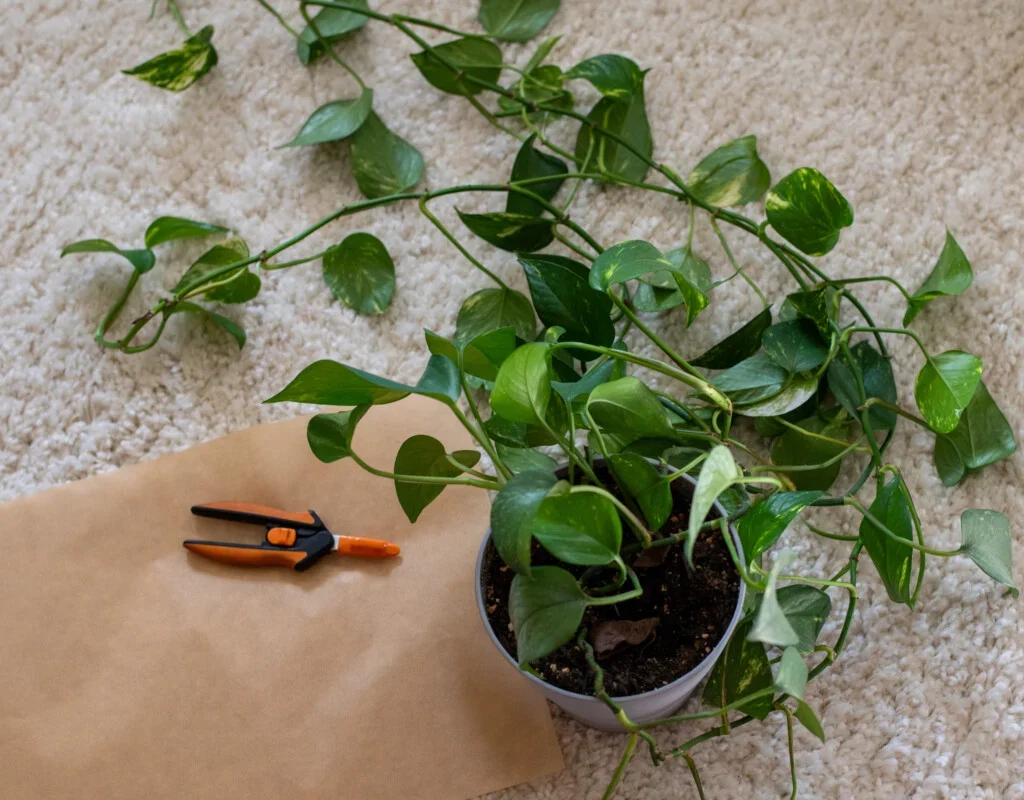
For tall, leggy plants, structural support can prevent breakage and improve overall appearance.
Support Options:
- Stakes or Bamboo Poles: Tie stems gently to stakes to support weak growth.
- Trellises or Frames: Ideal for climbing plants or vines like pothos or hoya.
- Wire or String: For creative training and shaping of trailing or sprawling plants.
Shaping Plants:
- Train stems to grow outward or upward to even out growth and improve light exposure.
- Remove overcrowded branches to encourage airflow and reduce leggy appearance.
Tip: Combining support with pruning accelerates bushier regrowth.
7. Repotting Leggy Plants
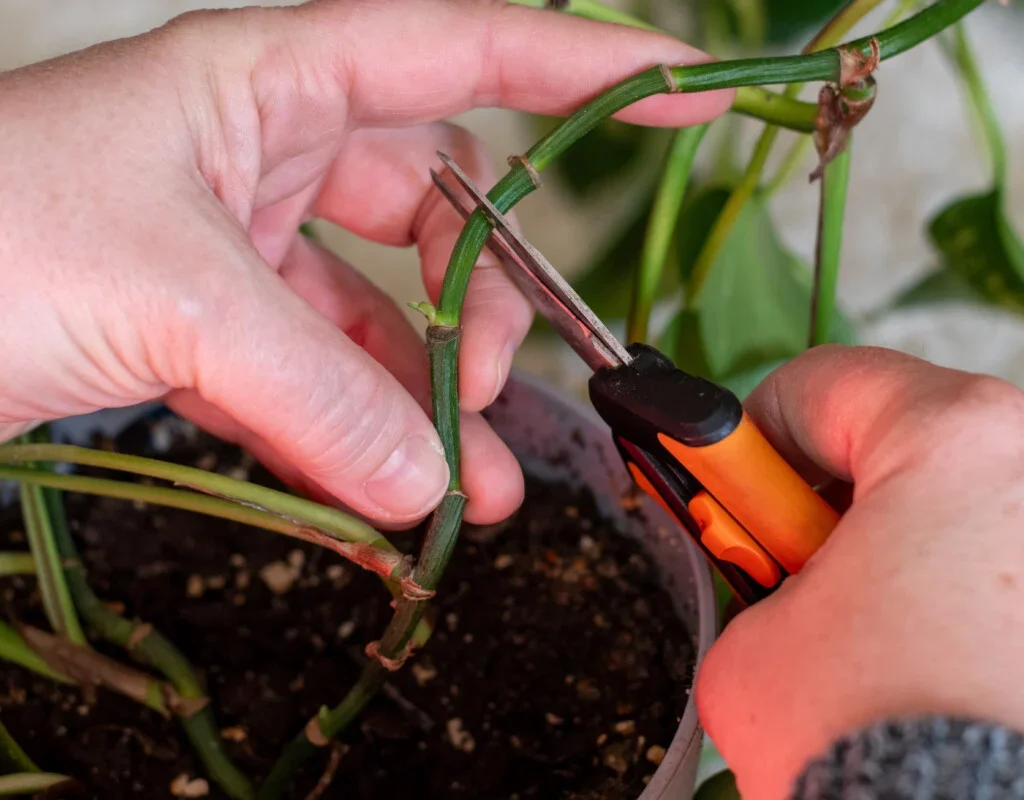
Repotting is often necessary for leggy plants to provide fresh soil, more nutrients, and room for root growth.
Repotting Steps:
- Choose a pot 1–2 inches larger in diameter than the current one.
- Remove old soil and inspect roots; trim any rotten or damaged roots.
- Replant in well-draining potting mix suitable for the plant species.
- Water thoroughly after repotting and allow plants to recover in bright, indirect light.
Tip: Repotting during active growth (spring or early summer) ensures quicker recovery.
8. Encouraging Natural Bushiness
Beyond pruning, light, and nutrients, certain practices promote naturally bushier growth over time:
- Regular Rotation: Rotating plants prevents them from leaning toward a single light source.
- Leaf Node Encouragement: Pinching above nodes forces multiple branches to emerge.
- Humidity Maintenance: Some tropical plants develop stronger stems and fuller foliage in higher humidity.
- Companion Planting: Grouping plants with similar needs can create microclimates that support robust growth.
Tip: Consistency is key; small daily or weekly adjustments yield long-term results.
9. Monitoring for Underlying Issues
Persistent legginess may indicate stress or pest problems.
Check for Common Issues:
- Pests: Spider mites, aphids, or mealybugs can weaken stems.
- Disease: Fungal or bacterial infections can stunt growth and cause yellowing.
- Root Bound Plants: Crowded roots limit nutrient uptake and lead to weak stems.
Tip: Early intervention prevents legginess from worsening and supports strong recovery.
10. Choosing Naturally Compact Varieties
Some houseplants are genetically predisposed to bushy growth and are less prone to legginess.
Examples:
- Peperomia: Naturally compact with small, dense leaves.
- African Violet: Slow-growing, full rosettes of foliage.
- Fittonia: Compact, colorful foliage ideal for low-light areas.
Tip: Selecting compact varieties for low-light rooms reduces the risk of leggy growth in the first place.
Conclusion
Leggy houseplants can be revived and transformed into bushy, healthy plants with proper care, pruning, and environmental adjustments. By addressing the root causes—such as insufficient light, improper pruning, or nutrient imbalance—you can restore the vigor and aesthetic appeal of your indoor greenery.
Key strategies include:
- Adjusting light exposure and using supplemental grow lights.
- Pruning, pinching, and propagating cuttings to stimulate lateral growth.
- Maintaining proper watering, fertilization, and humidity levels.
- Providing structural support and repotting when necessary.
- Choosing compact varieties and monitoring for pests or diseases.
With consistent care and attention to environmental conditions, even the most leggy houseplants can flourish, resulting in full, lush foliage, stronger stems, and a visually vibrant indoor garden. A leggy plant is not a lost cause—it’s an opportunity to reshape, revitalize, and create a more beautiful, thriving indoor space.
Tip: Keep a growth journal to track pruning, rotation, and fertilizer schedules—this helps predict and prevent future legginess.
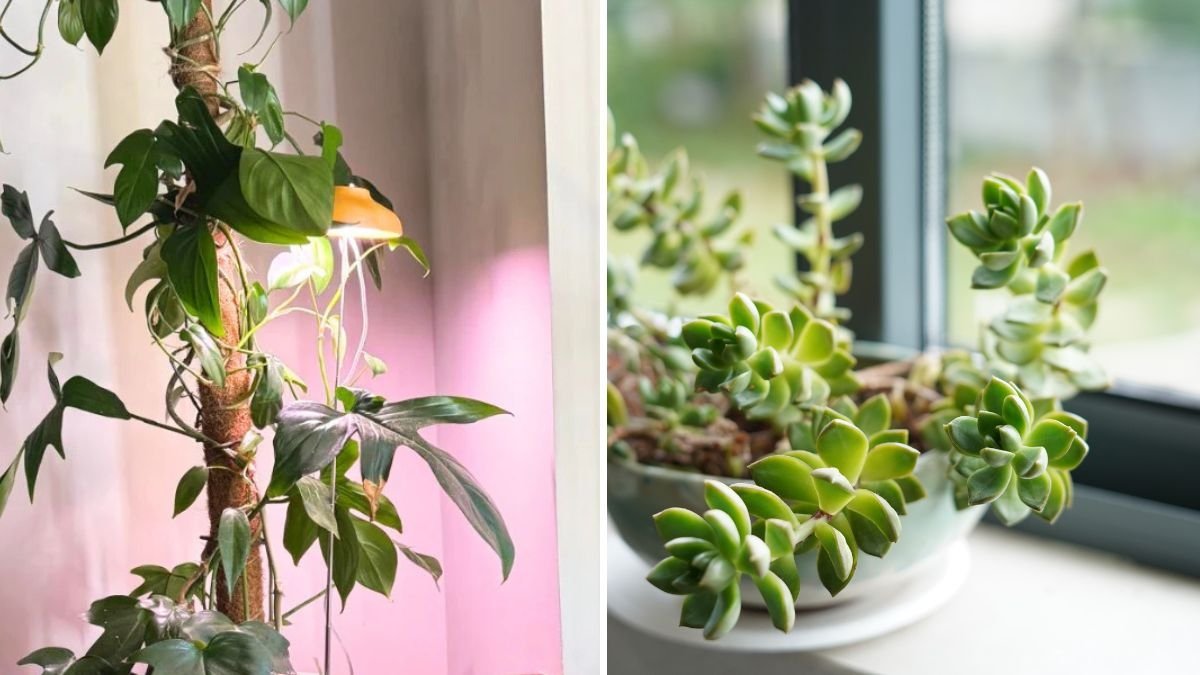




Leave A Comment